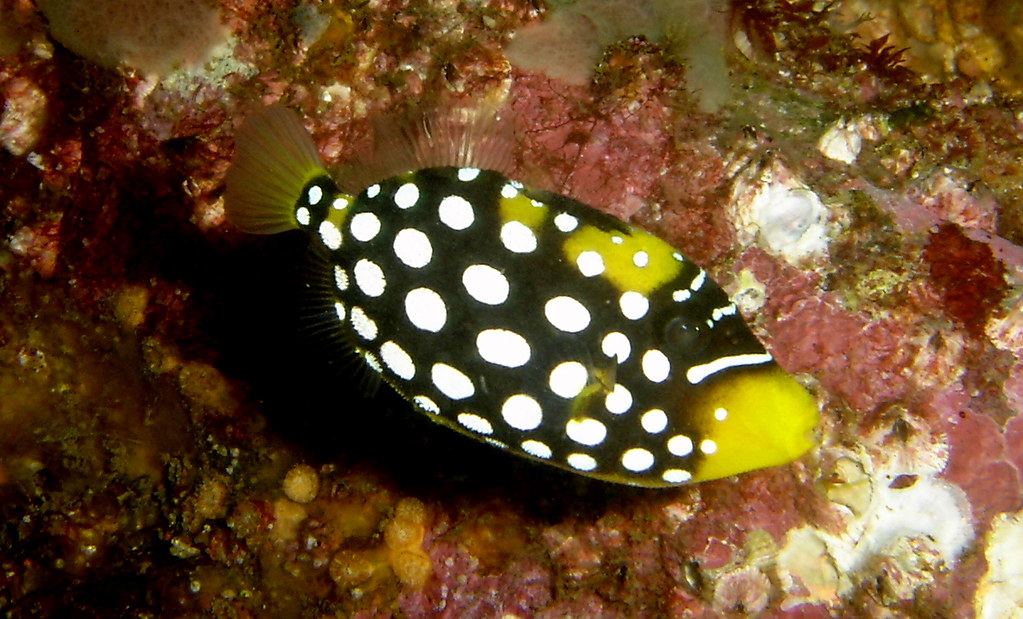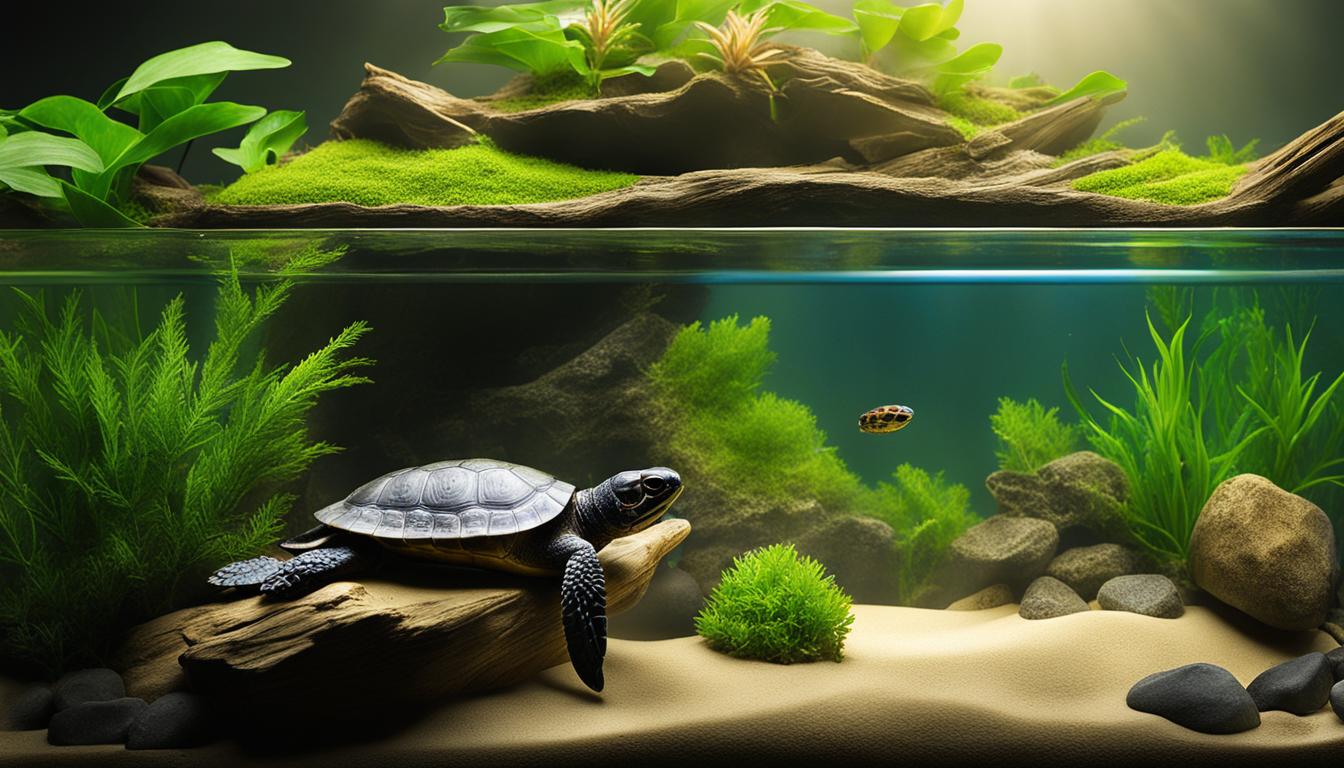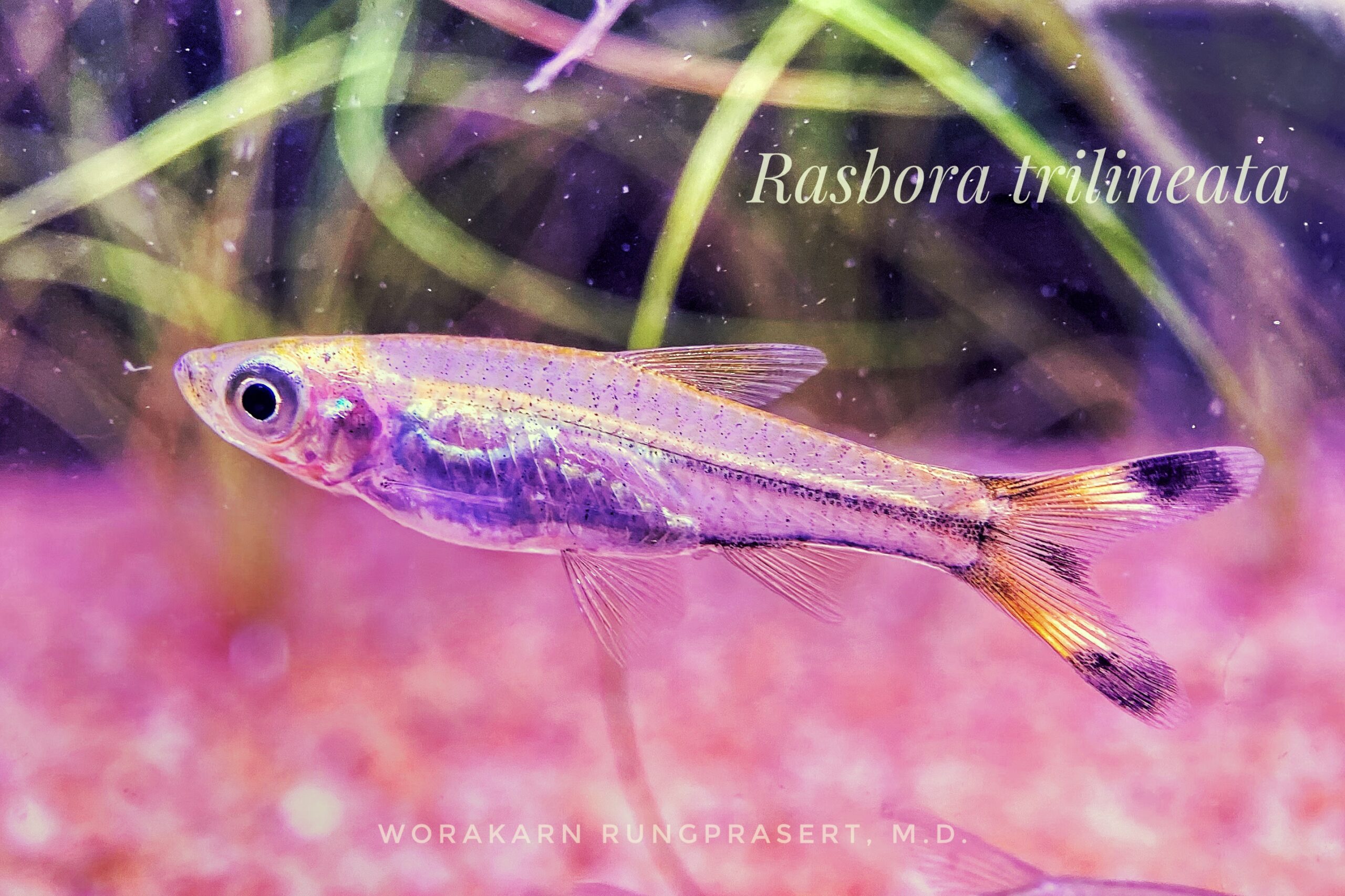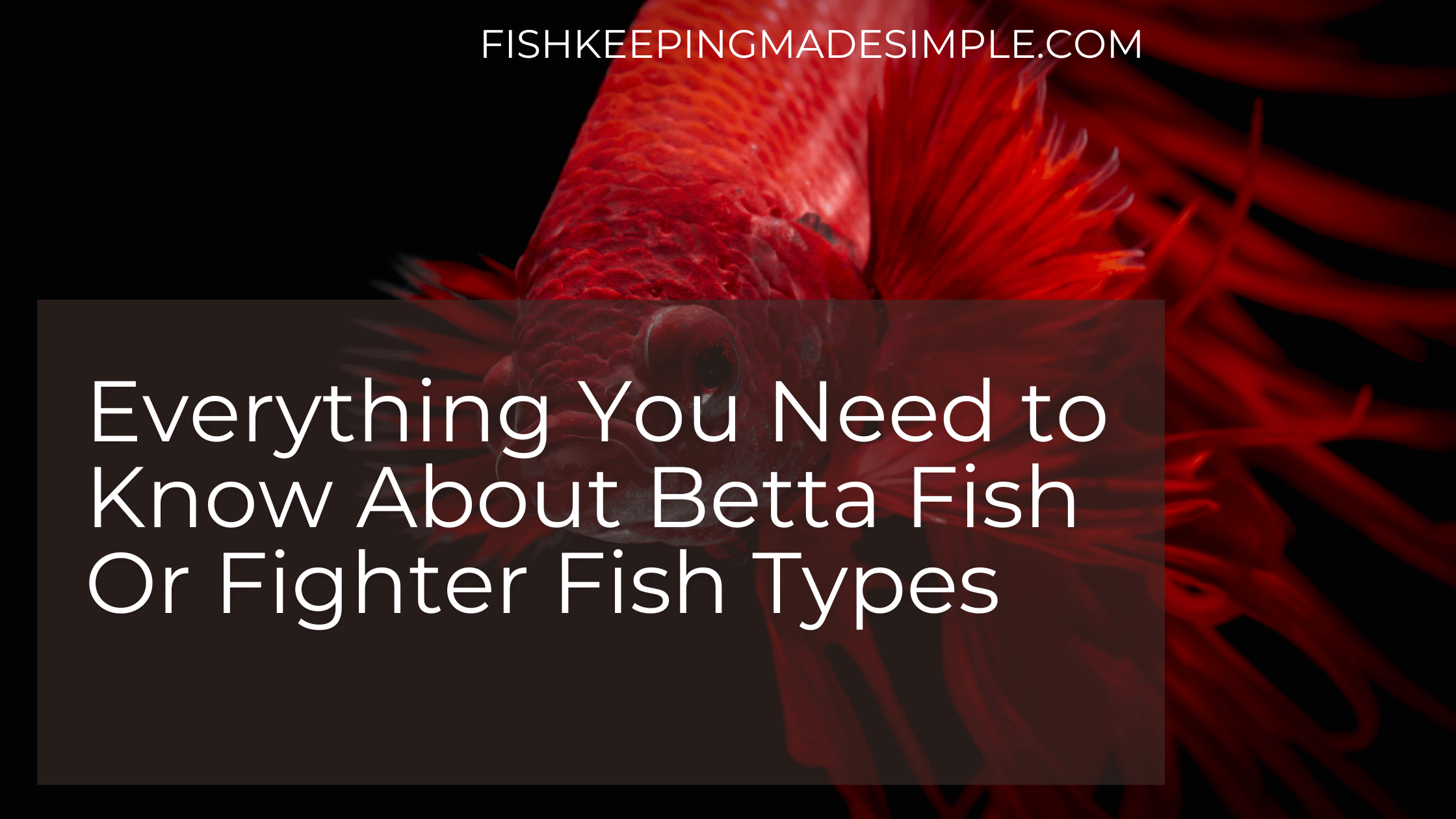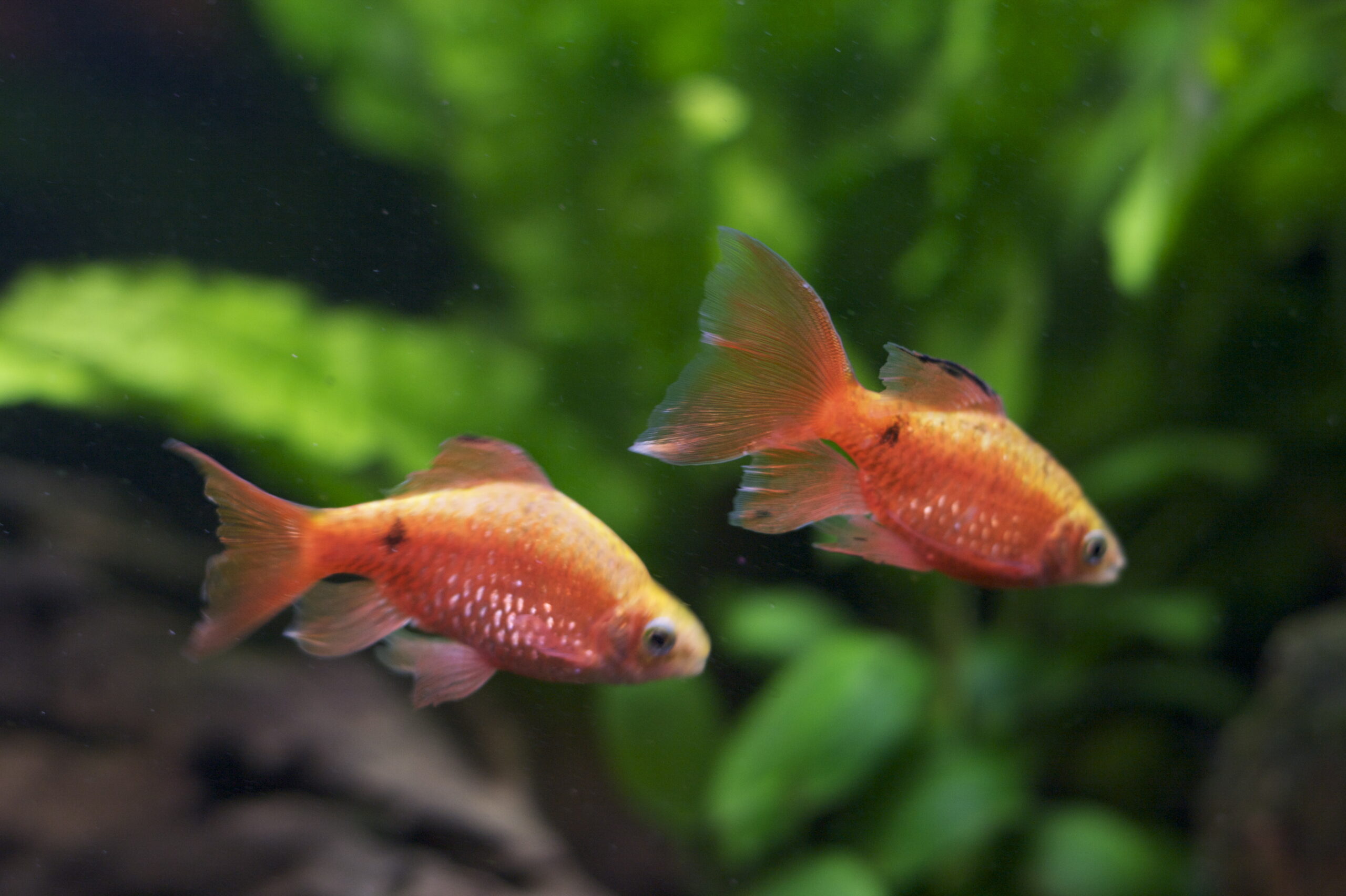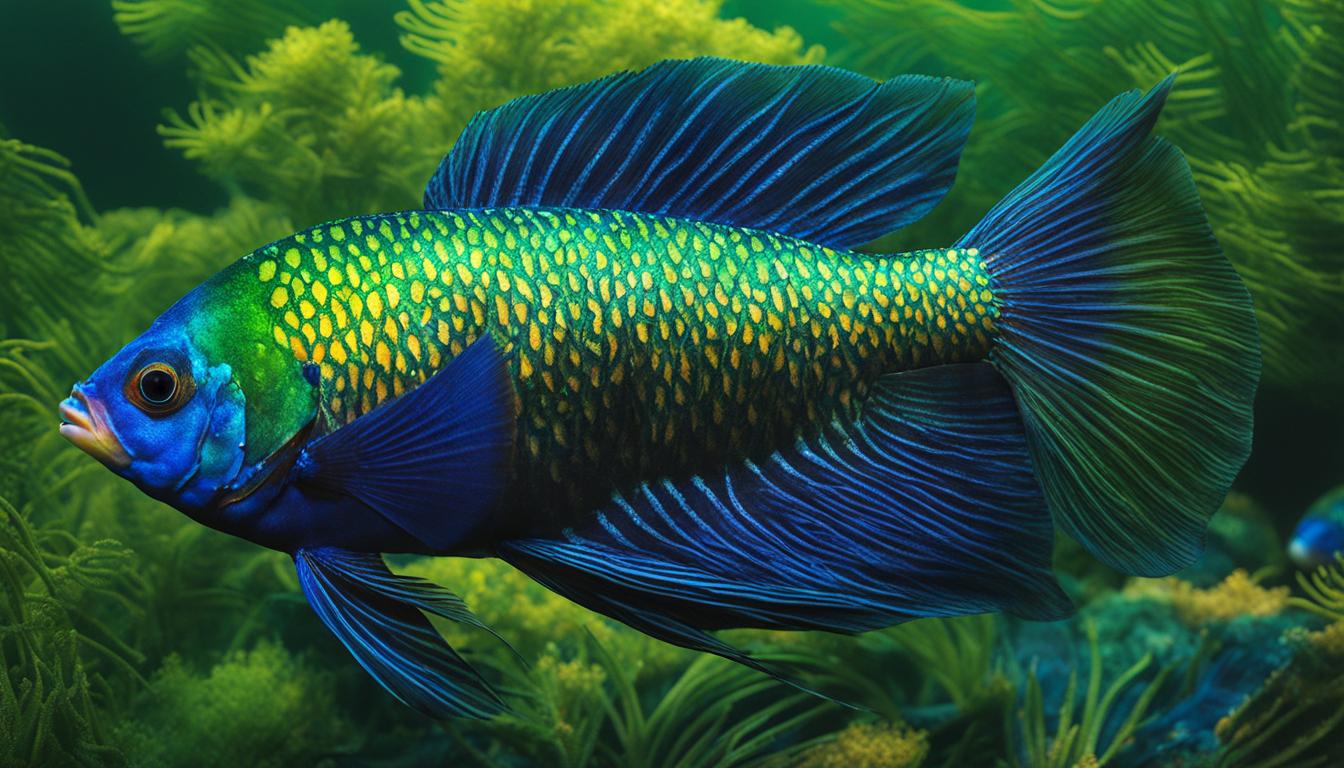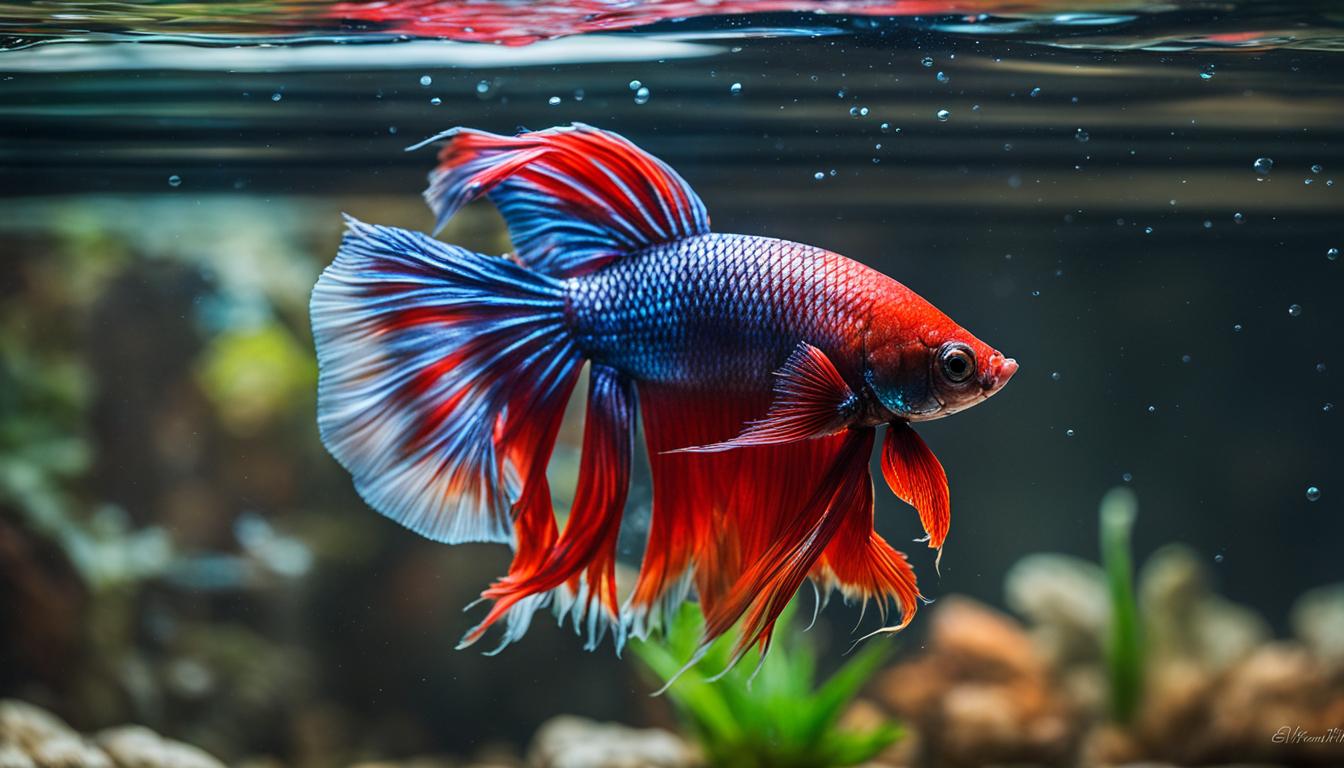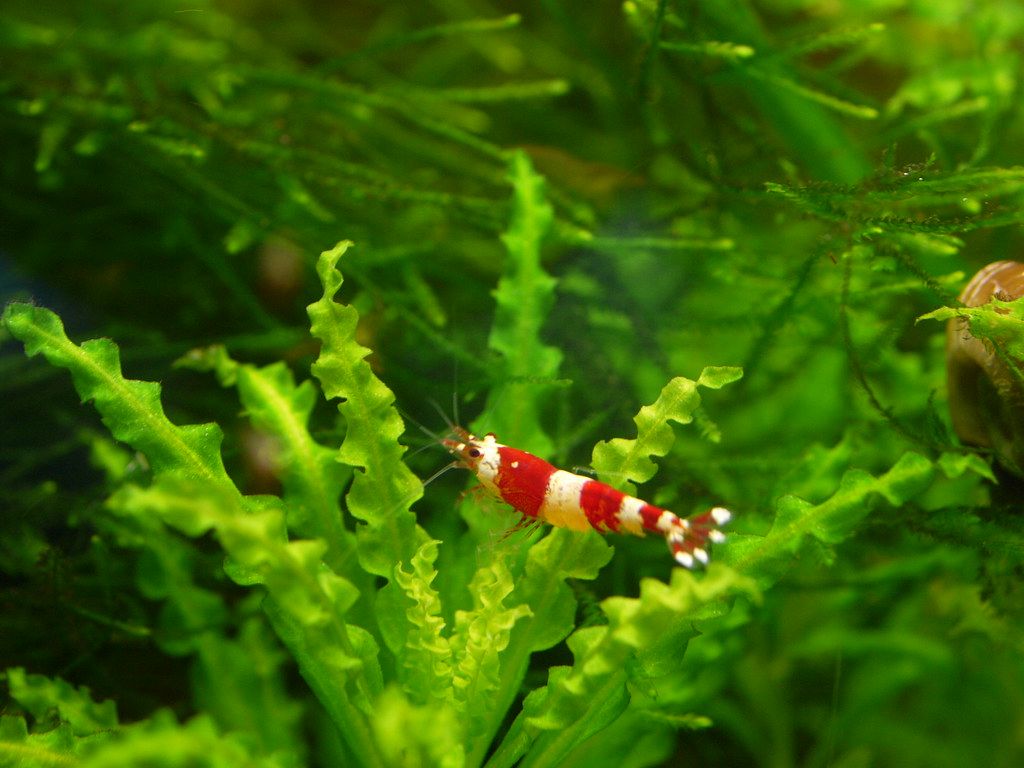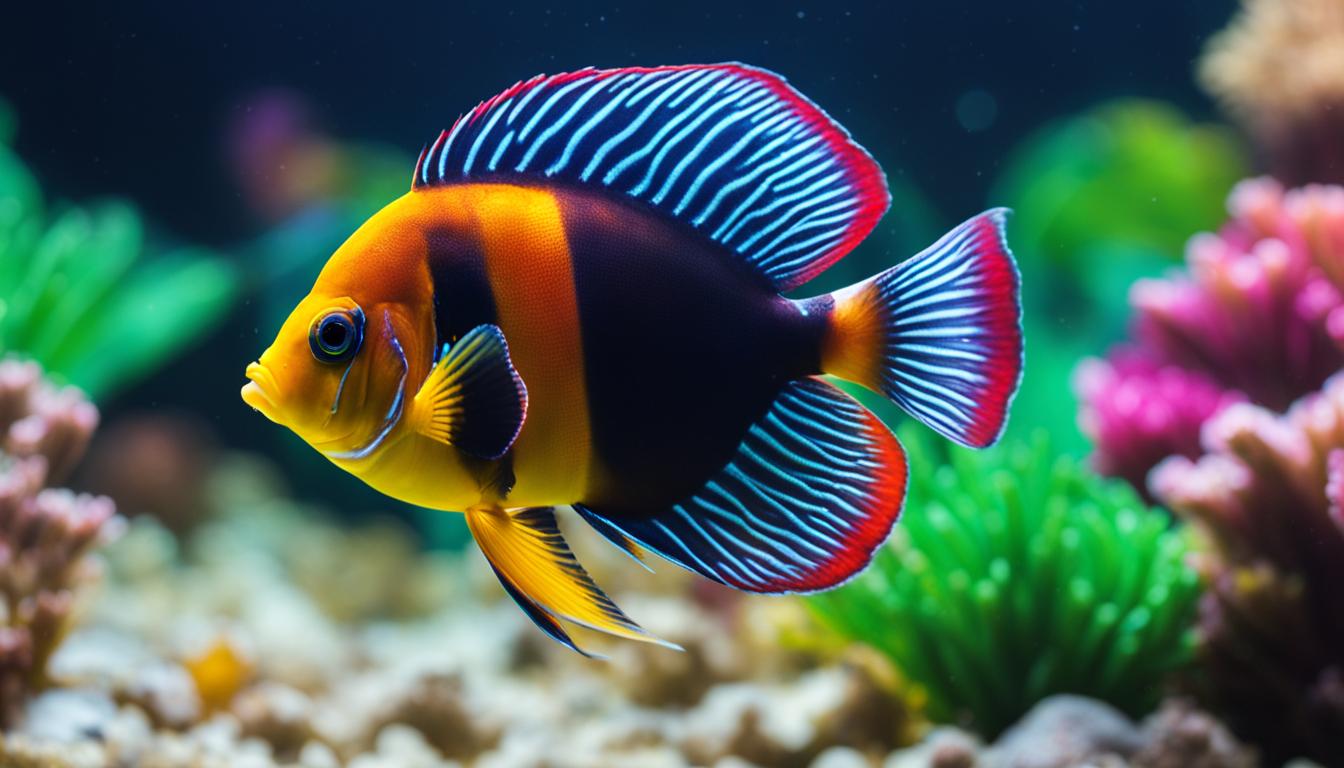Did you know a clown triggerfish was seen in Hawaii for the first time in 2017? This finding surprised marine biologists. These colorful fish are usually found in the Indo-Pacific region. Their appearance in Hawaii shows how marine life is always changing and how climate change affects where species live.
Exploring clown triggerfish fascinates me. These saltwater fish are amazing, with a look that stands out. Their black bodies with white dots and bright yellow and orange spots make them a joy to see in the wild.
In their natural home, these fish can grow up to 50 cm long. They live in both tropical and temperate waters, from shallow to 75 meters deep. Their strong jaws and teeth let them eat hard-shelled crustaceans and mollusks.
Clown triggerfish are also popular in saltwater aquariums. But, their natural home is facing big threats. The demand for them in aquariums and environmental issues are hurting their wild numbers. As we learn about these fish, we must think about how to protect their homes and them.
Table of Contents
Key Takeaways
- Clown triggerfish were first spotted in Hawaii in 2017
- They can grow up to 50 cm in length in the wild
- Their habitat ranges from shallow waters to 75 meters deep
- They have a unique diet of crustaceans and mollusks
- The marine aquarium trade poses a threat to wild populations
- Clown triggerfish are found in various tropical and temperate waters
- They use their dorsal and anal fins for swimming, not their tail
Introduction to the Majestic Clown Triggerfish
I’m excited to share my knowledge about the clown triggerfish. This species is a true gem of the Indo-Pacific region. It belongs to the Balistidae family.
Overview of Species Classification
The clown triggerfish is part of the Tetradontiformes order. It belongs to the Balistidae family. This means it shares traits with other triggerfish found in tropical and subtropical waters. These fish are known for their unique body shape and vibrant colors.
Physical Characteristics and Recognition
Clown triggerfish are easy to spot because of their striking look. They have a dark lower body with white spots. Their upper body is yellow with black freckles.
A white or yellow stripe covers their eyes. They also have a bright yellow mouth. Young clown triggerfish have white spots all over their body.
Historical Background and Discovery
The scientific community first documented the clown triggerfish in 1801. It has fascinated marine enthusiasts and researchers ever after. Its unique coloration and patterns make it a standout among coral reef inhabitants.
Today, the clown triggerfish is a subject of study and admiration in its native Indo-Pacific habitats.
Natural Habitat and Distribution Range
The clown triggerfish is a stunning tropical fish found in the Indo-Pacific region. I’ve seen them thriving in waters from East Africa to Samoa. Their range goes as far north as southern Japan and south to northern Australia.
Indo-Pacific Region Coverage
These vibrant fish live in a wide area of the Indo-Pacific. They are found in many countries, making them a true cosmopolitan species. The clown triggerfish’s natural habitat covers thousands of miles of ocean, showing their ability to adapt to different marine environments.
Preferred Depth and Reef Environments
Clown triggerfish prefer certain depths and reef structures. They are often found in depths of 1 to 75 meters, liking areas near steep drop-offs. They thrive in both inner and outer reef areas, adapting well to different reef environments.
Geographical Variations and Populations
While widespread, clown triggerfish populations vary across their range. They are considered uncommon or rare in most areas. Interestingly, non-native sightings have occurred in Florida, Israel, and Spain, likely due to aquarium releases. Their resilience is moderate, with population doubling times between 1.4 to 4.4 years.
| Characteristic | Detail |
|---|---|
| Max Length | 50.0 cm |
| Depth Range | 1 – 75 meters |
| Distribution | East Africa to Samoa, Southern Japan to Northern Australia |
| Conservation Status | Least Concern (LC) |
| Fishing Vulnerability | Moderate (40 out of 100) |
Distinctive Physical Features and Appearance
I’m always amazed by the clown triggerfish’s striking look. This saltwater fish has a unique color pattern that makes it stand out. The lower body is dark with big white spots, and the upper body is yellow with black freckles.
A white or yellow stripe runs along the snout. This is matched by a bright yellow mouth with a white line behind it.
Young clown triggerfish have white spots all over. As they grow, these spots fade on the upper half. This creates their famous adult look.
Adult clown triggerfish can grow up to 50 cm long. They become a big part of any reef environment.
Their size and colors help them in the wild. They blend with coral reefs, hiding from predators and finding food. The colors also help them talk to other sea creatures.
| Feature | Description |
|---|---|
| Body Color | Dark lower body, yellow upper body |
| Pattern | White spots on lower body, black freckles on upper body |
| Facial Markings | White/yellow stripe on snout, yellow mouth with white line |
| Maximum Length | 50 cm (adult) |
Behavioral Patterns in the Wild
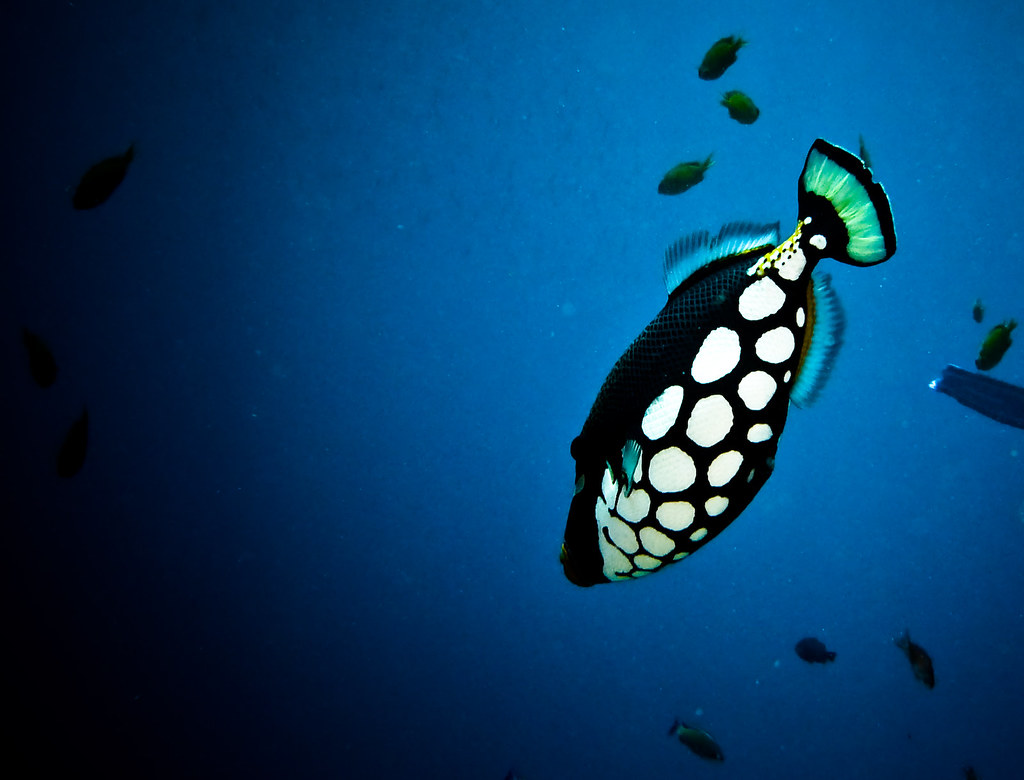
Clown triggerfish show interesting behaviors in their natural homes. They move, interact, and defend their areas in unique ways. This makes their world fascinating to explore.
Swimming and Movement Techniques
Clown triggerfish swim in a special way called balistiform locomotion. They use their dorsal and anal fins to move through the water. This lets them dodge coral reefs with ease, making them skilled hunters and quick escape artists.
Territorial Behaviors
These fish are very protective of their territory. They chase away other fish that get too close. If threatened, they hide in reef crevices for safety.
During breeding, they become even more protective. Both males and females defend their nests fiercely. They even show bravery towards divers who get too close.
Social Interactions
Unlike some fish that swim in groups, clown triggerfish prefer to be alone. They are rare and usually seen by themselves or in pairs. This makes them different from social fish like dory fish, which are loved by aquarium fans.
Clown triggerfish’s solitary and territorial nature makes them a challenge for marine experts to study. But, it also makes them rewarding to observe in the wild.
Feeding Habits and Diet
The clown triggerfish is a colorful part of marine life. Their diet is fascinating, playing a key role in coral reef ecosystems. These tropical fish have unique ways to find and eat their food.
Natural Prey Selection
Clown triggerfish mainly eat crustaceans and mollusks. Their strong teeth can crush shells easily. They target:
- Mysis shrimp
- Clams
- Mollusks
- Silversides
They can even eat whole pearl oyster beds, showing their big appetite and strength.
Hunting Techniques
Clown triggerfish have clever ways to find food. They move coral pieces to get to hidden prey. They also spit water to find buried creatures.
Dietary Requirements
In tanks, clown triggerfish need a diet that matches their natural eating. Here’s a quick guide:
| Aspect | Details |
|---|---|
| Diet Type | Carnivore |
| Feeding Frequency | 1-2 times daily |
| Food Suggestions | Mysis shrimp, clams, mollusks |
| Special Tip | Soak food in garlic occasionally for immunity boost |
Knowing their dietary needs is key to keeping clown triggerfish healthy in tanks. It helps them thrive like they do in the wild.
Reproduction and Life Cycle
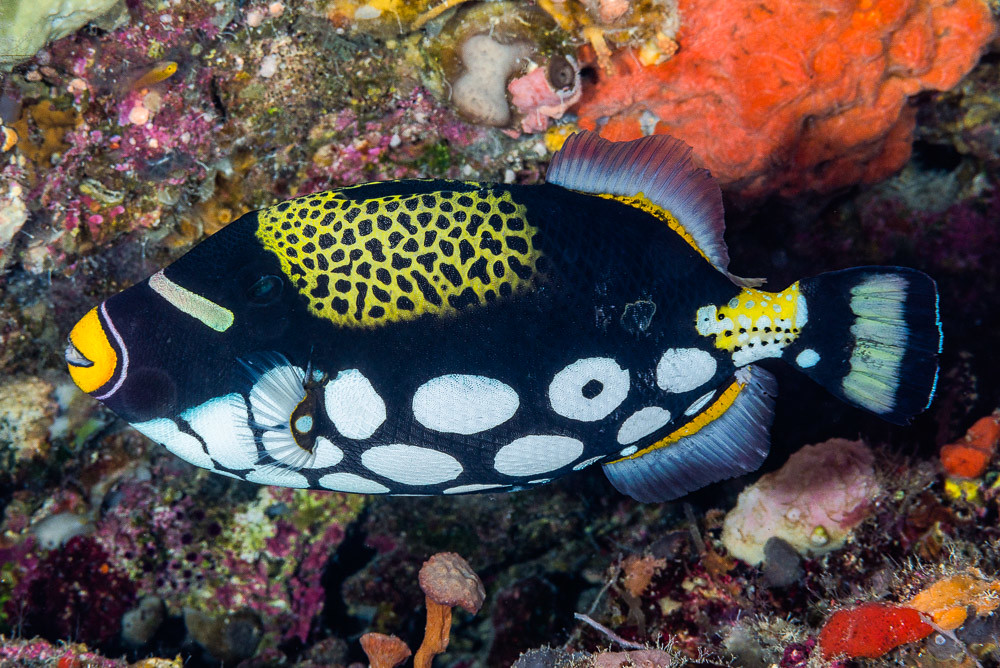
I’ve found out some cool facts about clown triggerfish reproduction. These fish, from the balistidae family, have special ways of breeding in the Indo-Pacific region. Females dig shallow holes in sandy areas to lay their eggs.
Both parents watch over the nest until the eggs hatch. They are very protective and will chase away other fish and even divers. They defend a territory that looks like an inverted cone above the nest, keeping it safe for their young.
The life cycle of clown triggerfish is quite interesting. They can grow up to 50 cm (20 inches) long and live for decades in the wild. Females usually lay between 100 and 1000 eggs at a time. The eggs are orange or pink and stick to surfaces near the parents’ sleeping spot.
After hatching, the larvae drift away to start their journey in the Indo-Pacific waters. As they grow, these colorful fish become a favorite among divers and aquarium enthusiasts. Their vibrant looks and interesting behaviors make them a joy to watch throughout their life.
Conservation Status and Threats
Exploring the conservation status of clown triggerfish reveals the challenges they face. Their bright colors make them popular in aquariums. But, this popularity harms their wild populations.
Impact of Aquarium Trade
The marine aquarium trade has hurt clown triggerfish numbers a lot. In the last ten years, their numbers dropped by 63% because of overfishing. This shows we need better practices in the aquarium world.
Environmental Challenges
Clown triggerfish also face many environmental threats. Habitat loss has made them 42% more vulnerable in coastal reefs. Pollution is responsible for 75% of their deaths. Climate change has cut their habitats by 20%.
Protection Measures
To protect clown triggerfish, we need strong actions. We must enforce fishing rules, create marine protected areas, and support sustainable aquariums. Teaching aquarium lovers about their impact can help. Together, we can keep these amazing fish safe for future generations.
- Implement stricter regulations on collection for the aquarium trade
- Establish more marine protected areas in clown triggerfish habitats
- Develop captive breeding programs to reduce pressure on wild populations
- Conduct research to better understand population dynamics and threats
Interaction with Other Marine Species
I’ve seen amazing interactions between clown triggerfish and other sea creatures. These colorful fish are often confused with dory fish. But they have their own special role in the ocean.
Unlike the friendly clownfish, clown triggerfish can be quite aggressive. This is true when they’re protecting their nests.
In the wild, clown triggerfish meet many different species. One interesting friendship is with cleaner wrasses. These small fish help by removing parasites from bigger fish, like the clown triggerfish. It’s a great example of how marine life works together.
Clown triggerfish are strong, but they’re not the biggest fish in the sea. Predators like jacks and tuna see them as food. This keeps their numbers in balance and helps the coral reef stay healthy.
The picasso triggerfish, a relative, acts in a similar way. Both are very protective of their space and can be mean to other fish. This behavior is also seen in aquariums, where they might change the tank’s layout and fight with other fish.
Knowing about these interactions is key to keeping the ocean healthy. It shows how complex and important coral reef ecosystems are. We must work to protect these delicate places.
Conclusion
Reflecting on the clown triggerfish, I’m amazed by this saltwater aquarium fish. Its vibrant colors and unique patterns make it a true gem of marine life. These tropical fish can grow up to 50 cm in the wild, though they usually reach 6 to 8 inches in captivity.
Clown triggerfish thrive in clear waters along external reef slopes, living at depths up to 75 meters. They’re diurnal creatures, active during daylight hours. Their diet consists mainly of benthic organisms like molluscs and crustaceans. For aquarium care, they need spacious tanks of at least 250 gallons with specific water conditions.
While popular in the aquarium trade, wild clown triggerfish populations face challenges. They’re uncommon in their native range despite widespread distribution. As marine enthusiasts, we must balance our fascination with these stunning fish and the need for conservation. By appreciating clown triggerfish in their natural habitat, we can help ensure their survival for future generations to enjoy.
FAQ
What is the scientific name of the clown triggerfish?
Where can clown triggerfish be found in the wild?
How big do clown triggerfish grow?
What do clown triggerfish eat?
How do clown triggerfish swim?
Are clown triggerfish aggressive?
What are the distinctive features of a clown triggerfish?
How do clown triggerfish reproduce?
Are clown triggerfish endangered?
Can clown triggerfish be kept in home aquariums?
References
International Coral Reef Society (ICRS)
I am a passionate aquarist with over 30 years of hands-on experience in fishkeeping. My journey began at a young age, collecting fish from the wild and learning through experimentation. Specializing in tropical fish, I bring a deep understanding of the hobby to FishKeepingMadeSimple. The site provides honest, detailed reviews of essential products and accessories to help fellow enthusiasts create the best environments for their fish.

